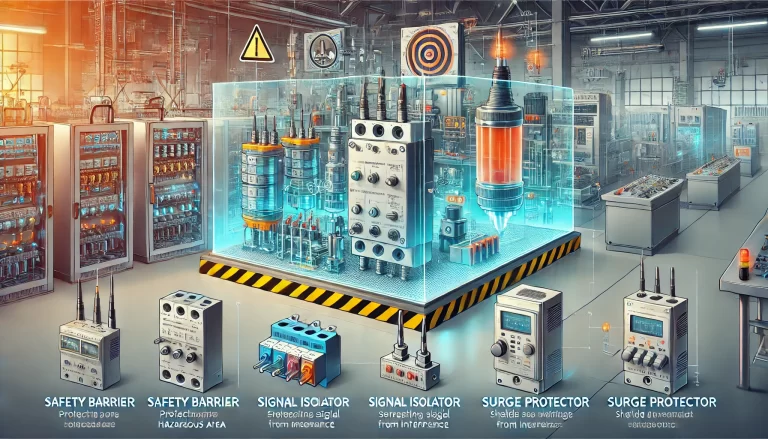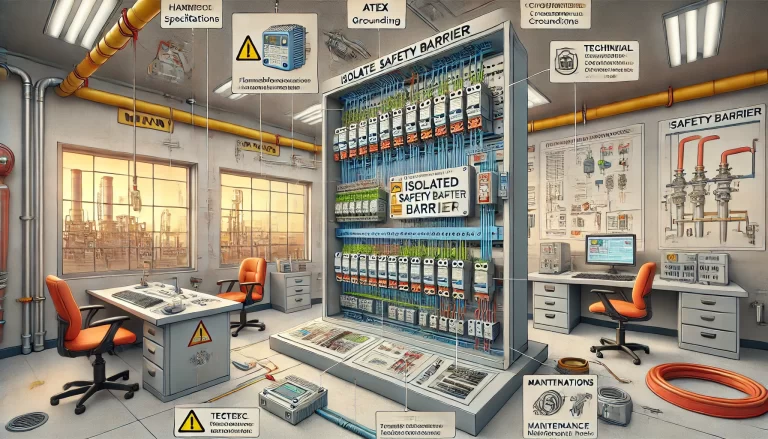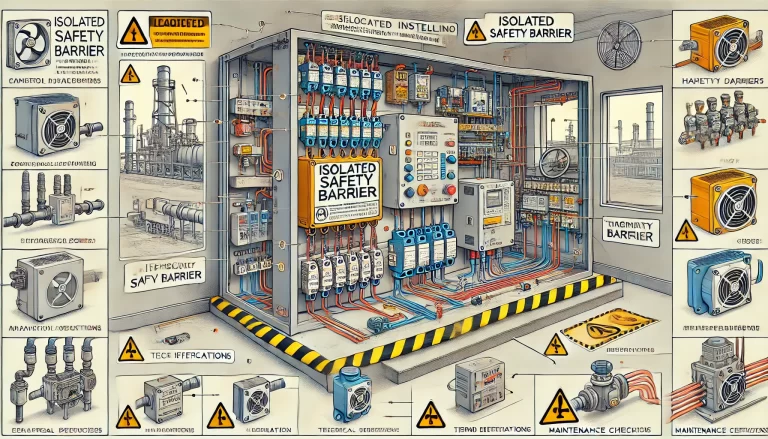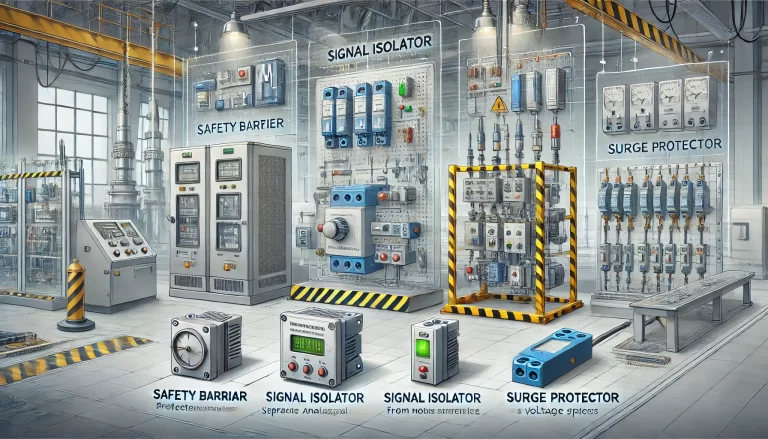In industrial and electronic systems, the protection and integrity of circuits are of paramount importance. Three critical components that ensure system reliability and safety are safety barriers, signal isolators, and surge protectors. This article explores their principles, functions, and applications, providing a clear distinction between these devices.
1. Safety Barriers
A safety barrier is an essential device in intrinsically safe systems. It acts as a boundary between intrinsically safe circuits and non-intrinsically safe circuits, limiting the voltage and current supplied to the former to ensure they remain within safe limits. The primary purpose of a safety barrier is to prevent dangerous energy from the non-safe side from reaching the intrinsically safe side, thereby safeguarding environments with explosive gases, vapors, or dust.
Types of Safety Barriers:
- Zener Barriers: These consist of Zener diodes, resistors, and a fast-blowing fuse. When the voltage exceeds the safe limit, the Zener diodes clamp the voltage, and the fuse disconnects the circuit to protect the downstream equipment.
- Isolated Barriers: These are more advanced and include energy-limiting units, current isolation units, and signal processing circuits, offering additional features like electrical isolation.
Applications:
Safety barriers are widely used in industries such as chemical plants, oil refineries, and coal mines, where there is a high risk of fire or explosion.

2. Signal Isolators
Signal isolators are devices primarily used in weak electrical systems to adjust, isolate, and convert various types of field instrument signals into standard signals (e.g., 4-20mA or 0-10V) for control systems like computers, DCS, or PLCs. A key benefit of signal isolators is their ability to shield downstream signal systems from interference caused by upstream systems.
Working Principle:
Signal isolators typically use linear optocouplers or magnetic coupling to convert input signals into isolated outputs. This ensures that the input, output, and power supply are electrically isolated, reducing noise and enhancing stability.Key Features:
- Noise suppression and signal stabilization.
- Electrical isolation to protect devices and operators.
- Compatibility with various industrial automation systems.
Applications:
Signal isolators are indispensable in industrial automation and control systems, ensuring smooth signal flow between sensors, controllers, and actuators.

3. Surge Protectors
Surge protectors, also known as surge suppressors or transient voltage surge suppressors (TVSS), protect electronic equipment and circuits from damage caused by sudden spikes in voltage or current. These spikes, known as surges, are typically caused by lightning strikes, power grid switching, or electromagnetic interference.
Types of Surge Protectors:
- Voltage-Switching Type: Devices like gas discharge tubes that remain inactive during normal operation and activate only during surges.
- Voltage-Limiting Type: Devices like varistors that limit the voltage within a certain range.
- Combination Type: These combine both voltage-switching and voltage-limiting elements for broader protection.
Applications:
Surge protectors are critical in environments prone to electrical surges, such as communication systems, power distribution networks, and sensitive electronics like data centers and medical equipment.

4. Key Differences
To provide a clearer understanding, the table below summarizes the distinctions between safety barriers, signal isolators, and surge protectors:
| Aspect | Safety Barriers | Signal Isolators | Surge Protectors |
|---|---|---|---|
| Primary Function | Prevent hazardous energy transfer in safe areas | Isolate and stabilize signals | Protect circuits from transient surges |
| Working Principle | Voltage/current limiting via Zener diodes and isolation | Electrical isolation via optical or magnetic coupling | Diverting excess energy using gas tubes, varistors, etc. |
| Applications | Explosive environments (e.g., oil refineries) | Industrial control systems | Power grids, communication networks |
Practical Example
To illustrate their use, consider a chemical plant:
- Safety barriers are installed in hazardous zones where explosive gases are present, ensuring safe energy levels in instrumentation circuits.
- Signal isolators help maintain clean data transmission between field sensors and the central control system, avoiding disruptions caused by electrical noise.
- Surge protectors safeguard sensitive equipment like servers and control panels from lightning-induced surges.

Conclusion
Each of these devices plays a unique role in ensuring safety, reliability, and efficiency in industrial and electronic systems. Understanding their principles and differences is crucial for selecting the right device for a specific application. While safety barriers focus on preventing explosions in hazardous environments, signal isolators ensure uninterrupted communication between systems, and surge protectors shield devices from sudden power surges.
Investing in the appropriate protection technology can save costs, enhance safety, and improve operational reliability in the long run.
